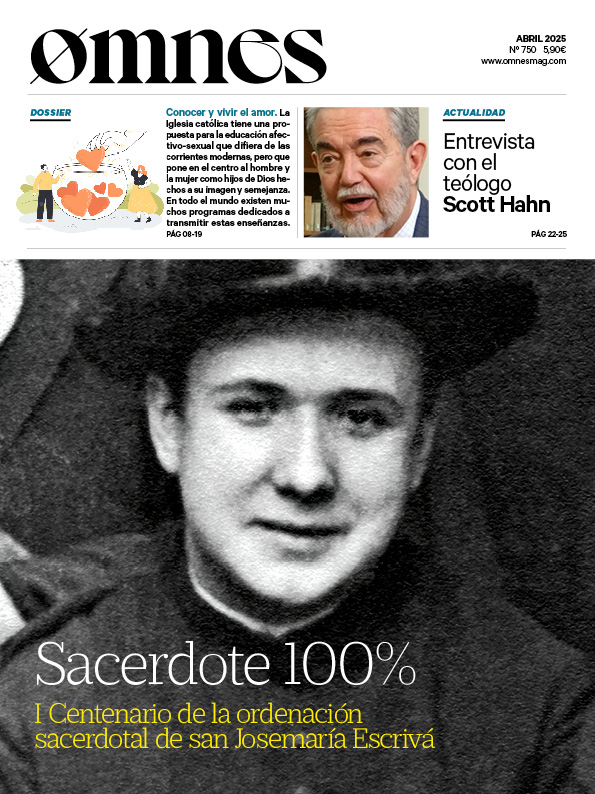 The demonsby F.M. Dostoyevsky. A journey to moral "solidarity
The demonsby F.M. Dostoyevsky. A journey to moral "solidarity 'Barefoot', Hakuna's film about the life force of music
'Barefoot', Hakuna's film about the life force of music "With the devil do not dialogue!" reminds Pope at Angelus
"With the devil do not dialogue!" reminds Pope at AngelusThe movie Nefarius (2023), directed by American filmmakers Chuck Konzelman and Cary Solomon, presents with remarkable realism an intense conversation between a death row inmate possessed by a cruel and intelligent demon and the psychiatrist in charge of evaluating him in prison. The narrative tension relies almost exclusively on the dialogue between the two characters, achieving an unsettling and deeply reflective atmosphere.
The film is conceived from an ecumenical point of view, that is, it explicitly avoids any particular reference to Catholicism, such as the intercession of the Virgin Mary, the saints, the sacraments or the ministerial priesthood. However, the core of the message is deeply spiritual and revolves around absolute trust in God, whose saving action is central. This is indicated by the very teaching of Jesus Christ in the Lord's Prayer: "Lead us not into temptation, but deliver us from evil" (Mt 6:13).
The harshness of the story, at times difficult to bear, also seems to be aimed at generating a serious reflection on the abolition of the death penalty. In this sense, the film can be read as a plea in favor of life, in line with the modification of the Catechism of the Catholic Church promoted by Pope Francis.
A modern debate on evil
The characterization of the characters and the rhythm of the sequences immediately capture the attention of the viewer, who is immersed in a real debate about good and evil in the contemporary world. The film unmasks the arguments of postmodernity and confronts the viewer with a spiritual reality that is often ignored or ridiculed.
In this context, a great paradox emerges: the demon, Nefarius, has been working since the psychiatrist's childhood to influence his soul, sowing atheism and preparing the ground so that, when the time came, he would sign a death sentence. The conversation between the two shows how the denial of the spiritual (the existence of God, of the devil, of the soul) can hide the true inner drama of the human being.
Konzelman and Solomon manage to convey, with remarkable skill, how the psychiatrist manages to save himself from possession by regaining faith and trusting in God again. It is precisely this invocation that prevents the demon from entering him. Thus, the path of evil appears as a process: it begins with pride and selfishness, passes through distrust in God, and culminates in his denial or in the worship of a false image, deformed by Satan himself.
The film makes a clear and profound case that the rejection of God brings with it a radical inability to confront the problem of evil, both in one's own suffering and in the suffering of others. And when God is denied, evil becomes even more incomprehensible and hopeless. The intention here is not to solve the problem of evil, but to expose it. For a broader reflection on this question, see the recent work of José Antonio Ibáñez Langlois.
The mystery of suffering and human freedom
It is important to distinguish between two types of evil: physical evil and moral evil. As for the former, it is enough to remember that creation is a natural system in equilibrium, where certain processes involve pain or destruction, but are not for that reason devoid of meaning. God is not the author of evil, neither directly nor indirectly. He has created the world with its natural laws and is always present to help us give a transcendent meaning to our ailments.
With regard to moral evil - sin - God permits it because he wanted human beings to be free, capable of choosing the good and, therefore, of loving. Freedom, as St. John Paul II reminded us in Veritatis splendoris inseparably united to the Truth, which is Christ himself: "Way, Truth and Life. Hence St. Thomas understands freedom as strength, St. Josemaría as energy, and Edith Stein as the courage of the free soul.
A Christian response to suffering
Finally, it is worth highlighting the lucid exposition of suffering offered by St. John Paul II in Salvifici doloris. The great question that arose after the horror of the Holocaust - "Why did God allow this? Benedict XVI proposed transforming reflection into prayer: "Why, Lord, have you allowed this? And John Paul II gave a Christian and hopeful answer: suffering can become a vocation, a participation in the redemptive cross of Christ. A mystery that does not eliminate pain, but gives it an eternal meaning.
Auxiliary Bishop of the Archdiocese of Santo Domingo, Dominican Republic











